talkingfashion » 1940s
-
Dazzling Dressing Tables: A Brief History of the Vanity
Dazzling Dressing Tables: A Brief History of the Vanity
By Paige McKirahan
Though the world of luxury furniture is very much alive and well, the type of pieces we see popularized now are worlds away from the specially crafted styles that previously dominated the market. If you are someone with cosmetics, accessories, or perfumes, it is likely that you have some sort of container to hold them all (or so we hope!). But, we ask, have you ever stored them in an ever-so-glamorous vanity?
The dressing table is one piece of furniture that reveals a great deal about the culture in its time; few other items tell us more about leisure pursuits, trends, and changing social customs than this. This is an ever evolving piece and it has held a variety of names including the dressing table, dressing stand, vanity, and toilet table. But, we wonder, where did this fashionable furniture come from and how did it achieve the elegant status is possesses today?
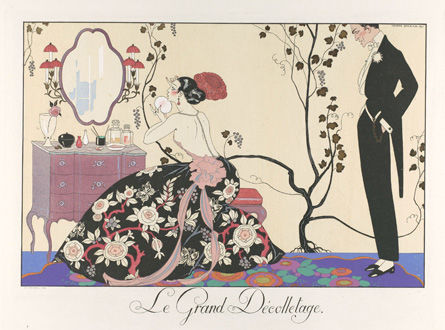
(photo credits to the metmuseum.com)
Of course, the vanity comes from humble beginnings in ancient culture; its earliest ancestor is considered to be ornate boxes that were crafted for holding beauty products in Egypt and Greece. The use of boxes for this storage purpose continued for centuries until the 1600s in Europe, where the early vanity began evolving. The original name of the piece was the toilet table and they were used in the bathroom for hygiene purposes with a wash basin for freshening up. High society in this century and into the next began wanting more delicate designs; they started commissioning specialized furniture pieces that were modeled after shaving tables, poudreuses, and the low boy. Poudreuses hailed from France; they boasted a small tabletop for holding perfume, along with a small amount of drawer storage for makeup. Low boys were more so popular in the U.S. and England and were often custom made. In addition to their decorative elements, they typically offered one or two rows of drawers for storage purposes.
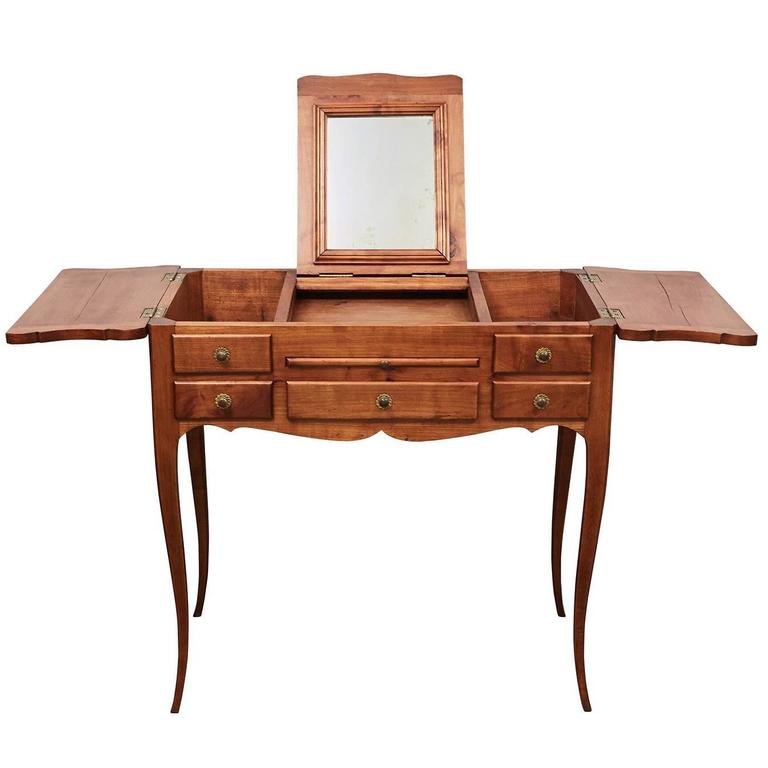

Poudreuse (top) and Low boy vanity styles
(photo credits to pinterest.com)
As we headed towards the 19th century, these tables started to become larger with more decorative features. They now included mirrors and an increased number of drawers, making them a more cabinet-style. With their newfound function, they began being included in bedroom furniture collections and were commonly accompanied by a small stool. The variety of styles offered also increased in this century; colonial, Queen Anne, and Chippendale style vanities were elaborate and were often made of oak, walnuts, or mahogany. We saw huge art movement influence on these tables and many revivalist styles including Gothic, Elizabethan, Rococo, and Renaissance.
19th Century Rococo Vanity
(photo credits to inessa.com)
The early 20th century brought the Art Deco movement alive; this artistic style is synonymous with the 1900s rise of the vanity as luxurious dressing tables became the epitome of prestige. Old Hollywood films of the ‘20s and ‘30s painted a picture of a femme fatale sitting in her Manhattan apartment decorated with an elegant vanity table. Since then, vanity table's luxurious standing still prevails with influencers and couture queens alike creating entire rooms surrounding their vanity space. Do you have a vanity you are looking to fill! Well say goodbye to those empty drawers and hello to our collection for a solution any accessory lover would adore!
-
Designer Spotlight: Angela Caputi
Designer Spotlight: Angela Caputi
By Paige Mckirahan

(photo credits to advancingwomenartists.com)
This week, we figured that it would only be appropriate to spotlight one of our favorite Florentine designers, Angela Caputi, as she is a lover of the cross motif. Working out of a small shop in the historical "Palazzetto Mediceo", this bijoux aficionado has been creating pieces reminiscent of 1940s American Hollywood since 1975. Her brand quickly became popularized in the world of couture costume jewelry, catching the eyes of consumers, museums, and high fashion stylists alike. These pieces of art are heavily researched and always evolving; her signature style involves pieces that are created using simple materials with a variety of curated colors and shapes. In her domination of the global market, her creations have seen many movie sets and high fashion shoots since the brand's conception. Interested in owning one of her awe-inspiring bijoux artworks, click here to see what we have to offer! For more on her story, we invite you to visit her website.
Sources:
Angela Caputi: History. (2015). Retrieved from http://www.angelacaputi.com/en/history/
-
History of the Watch: A Timeless Timekeeping Accessory
The Watch: A Timeless Timekeeping Accessory
By Paige McKirahan
The neverending passage of time is what that we base all of our daily schedules on; from sleep to work to the next fun party, everything runs on the basis of time. But, what is time without a timekeeping device? Without them, we would never be quite sure if were truly on time, and for chronically late people (like myself), this would create quite a problem. People found this to be increasingly troublesome and started looking for a solution; yes, clocks on the wall tell us all we needed to know, but how would we have this knowledge if we were out and about or a clock wasnt near? This question was answered with the creation of the wristwatch in the early 1800s for the Queen of Naples.
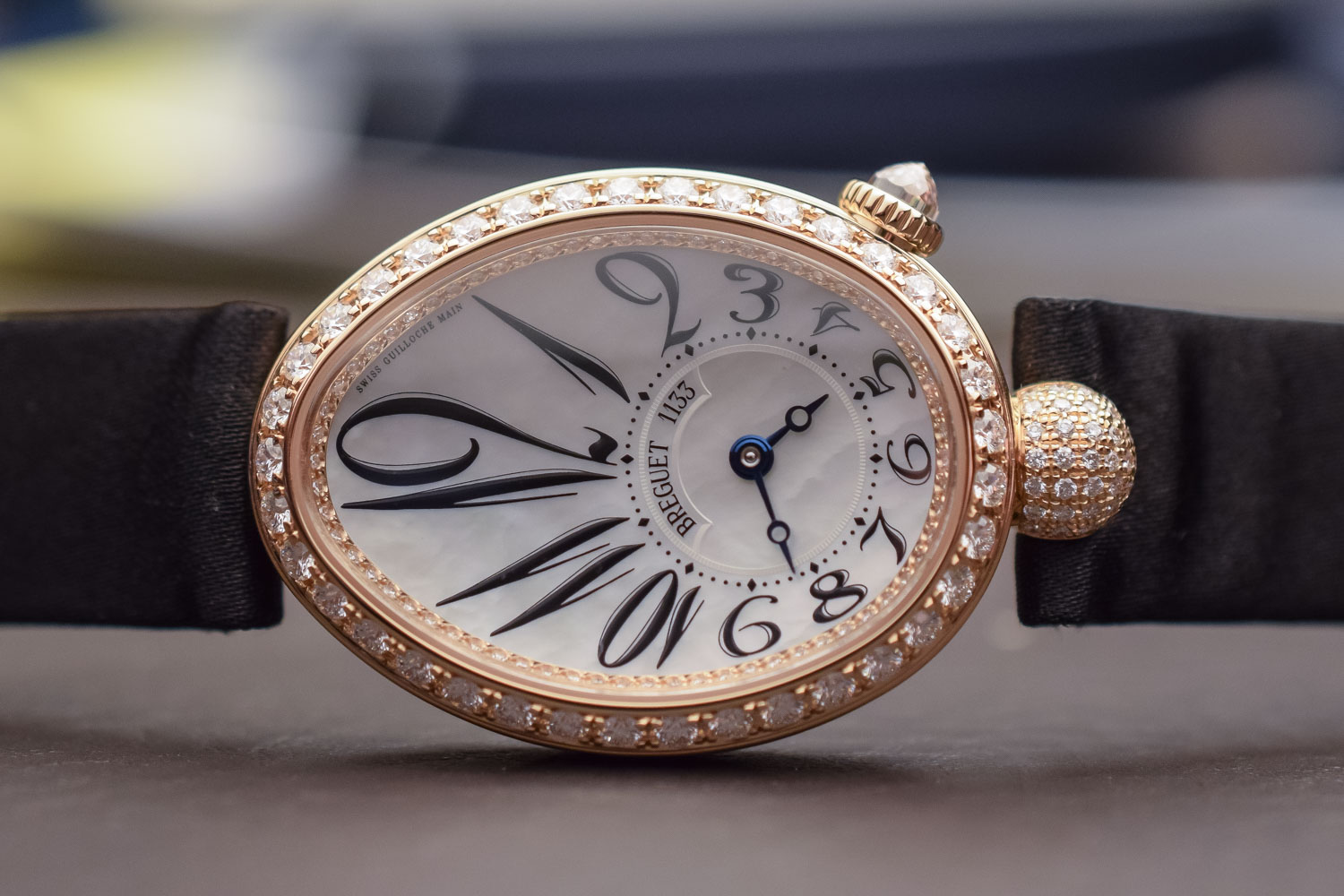
A replica of the first wristwatch
(photo credits to monochromewatches.com)
Despite the fact that arm watches were actually created in the 1570s, they were not worn on the wrist and weren't particularly popular with the public until this updated 17th century design. Arm watches were more so worn by women on account of the fact that they were prone to damage; men wore pocket watches and the first was created in 1574. Wristwatches changed this dynamic on account of the fact that men in the military advocated for the accessory as it allowed them to keep track of time with ease. Alberto Santos-Dumont, a Brazilian aviator, reached out to his friend Louis Cartier to come up with a style that of watch that would allow him to keep both hands on his controls while still being able to properly time flights. Cartier collaborated with watchmaker Edmond Jaeger to develop the Santos wristwatch, which is one of their brands cornerstone pieces.
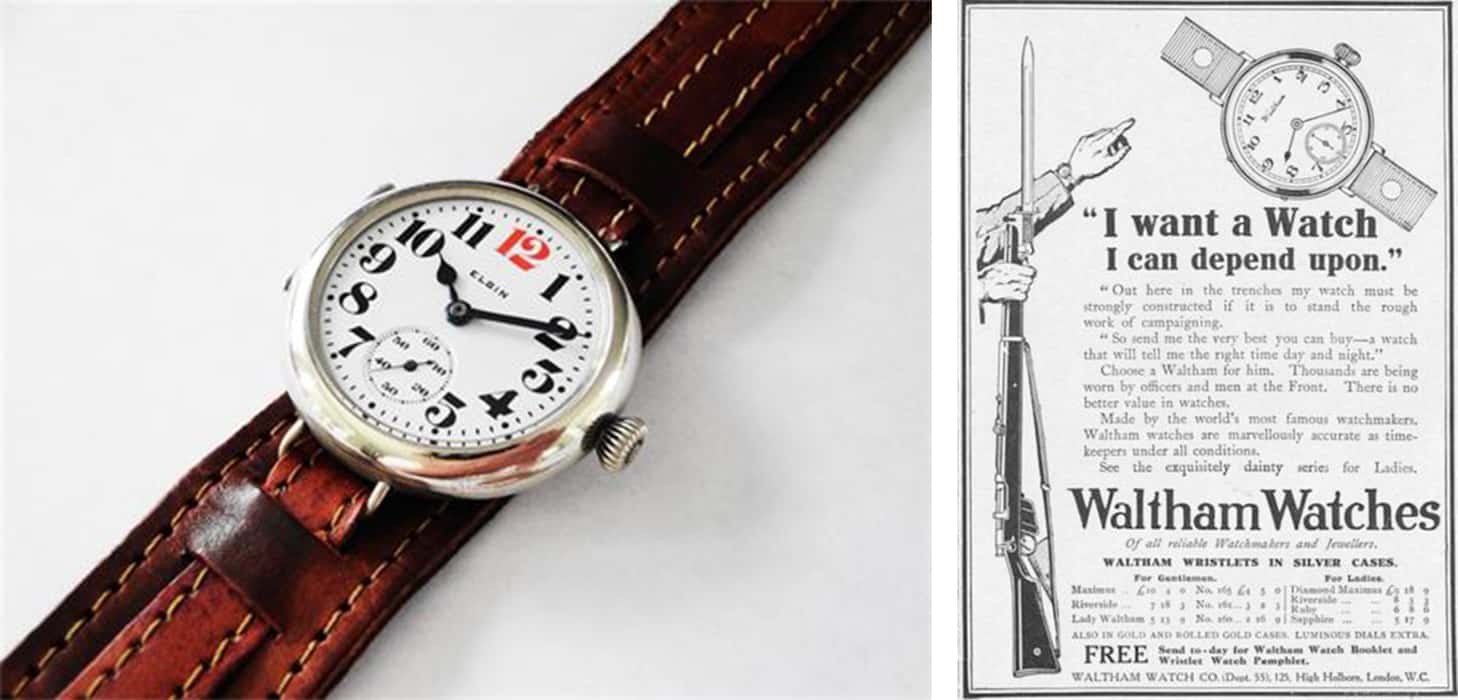
Military watch ad from WWI
(photo credits to wornandwound.com)
As we progressed towards the first World War, the popularization of watches for those in the military grew; the wristwatches they were given were referred to as “trench watches” and they established themselves as part of the Officers Kit for the war front. After this time, this accessory began to truly evolve as industrial advancements allowed for the production of wristwatches with automatic winding. John Harwood, a watch repairer, claimed patents for this ingenuity in 1923 after he was the first who managed to use the kinetic power garnered from the watches' hand movement to changing mechanisms. He then started producing these watches in a factory in Switzerland in 1928, which gave the public a chance to purchase one of his timekeeping pieces that could work for 12 hours on a full charge. In the 1950s, fully electric watches were introduced, with the balance wheel being powered by a solenoid, which is a thin wire trapped around a metallic core that procures electric currents.
This new electric watch allowed for the birth of the quartz watch, which removed all moving parts in mechanical watches; this 1969 invention instead used a battery, allowing them to be more shock absorbent and accurate without constant cleaning or oiling. Quartz watches are still manufactured today, but some luxury Swiss brands choose to create non-quartz options by hand. Today, watches can be made of stainless steel, silver, gold, titanium, carbon fibre, platinum, and aluminum. Some manufacturers even use more high tech silicons and ceramics in experimental design. Aside from regular watches, though, smart watches have made waves in wearable timepieces in the past five years and can be seen on the wrists of millions. Apple, Samsung, and Google have all created their own smart technology, opening the door for other new watches that can be connected to smart devices. Whether you are a fan of the classics or are going all digital, read on to see where your preference falls in the top 5 most iconic watches of all time!
The Cartier Santos
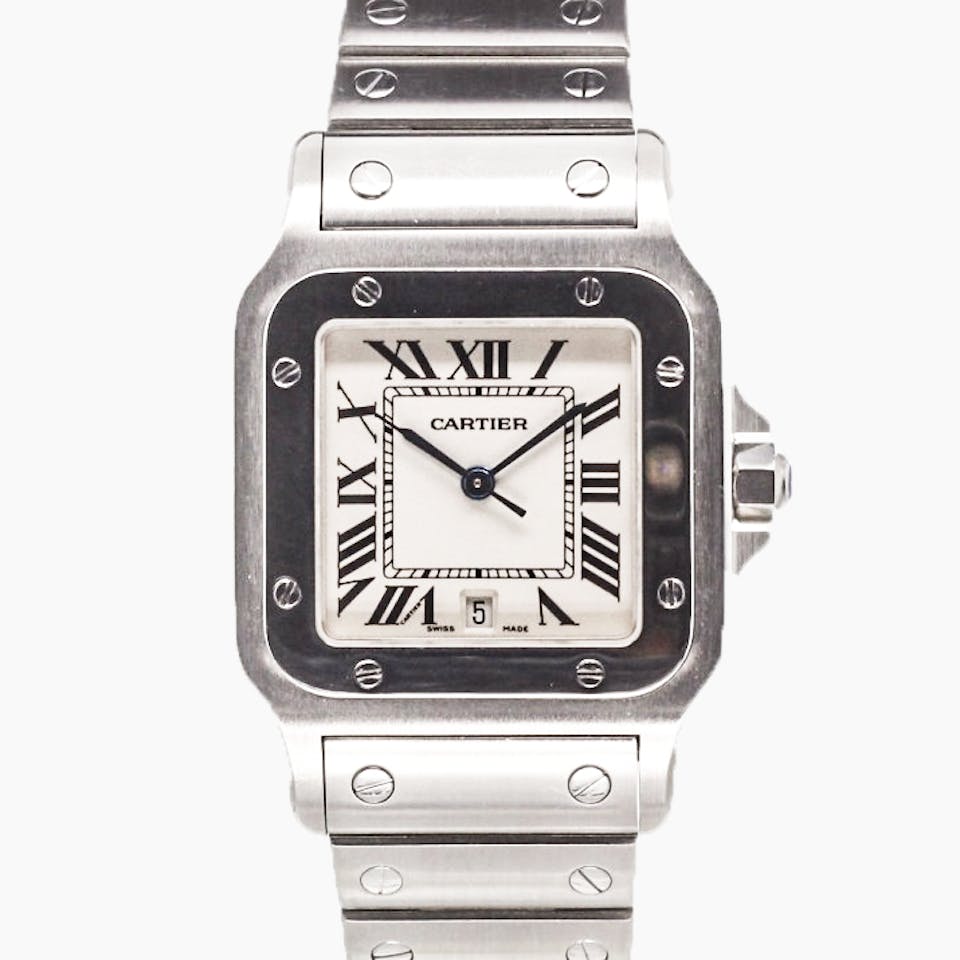
As we learned, this watch was one of the first of its kind and was created to help Alberto Santos keep time while flying his plane. Today, it is an iconic style who’s elegance and history lures in all types of buyers.
Jaeger- LeCoultre Reverso
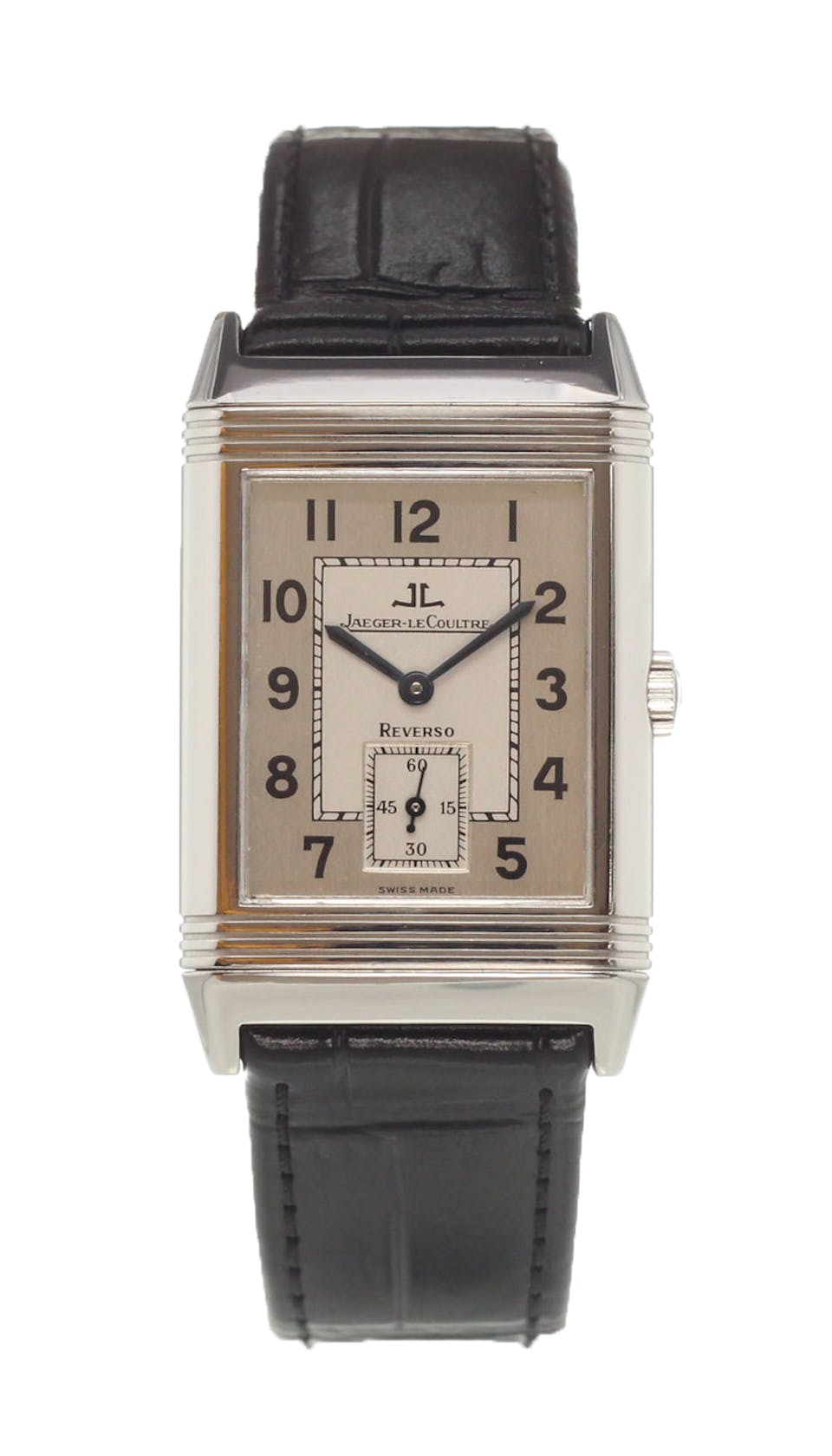
This Art Deco piece made it debut in 1931 as a watch for Britian's elite polo society. It featured a casing that was on a swivel, which ultimately protected the watch from cracks caused by force. Its classic, angular style sets it apart from the rest, appealing to collectors everywhere.
IWC Pilot’s Watch
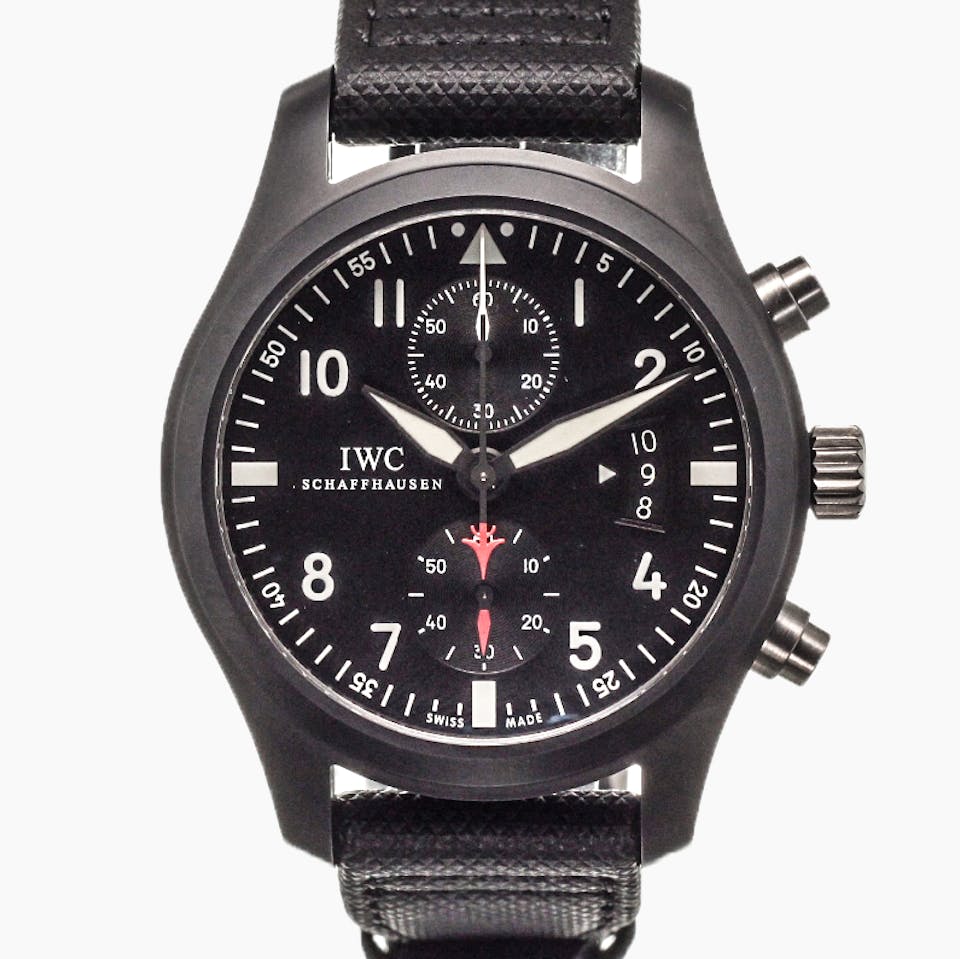
This Special Pilot's watch was the first of its kind at the time of its release by IWC in 1936; it prompted a collection of other military grade watches that captured the praise of the public for decades. This timepieces features a stainless steel waterproof casing that surrounds a softer inner cage, protecting the movement from magnetic fields.
Patek Phillippe Perpetual Calendar Chronograph

This timepiece was one of the first of its kind as it was able to keep track of the date for 200 years without adjustment. Patek released this watch in 1941 and it took the timekeeping community by storm as it was also able to measure small increments of time. Today, it is still widely sought out by collectors and leisure wearers alike.
Rolex Datejust
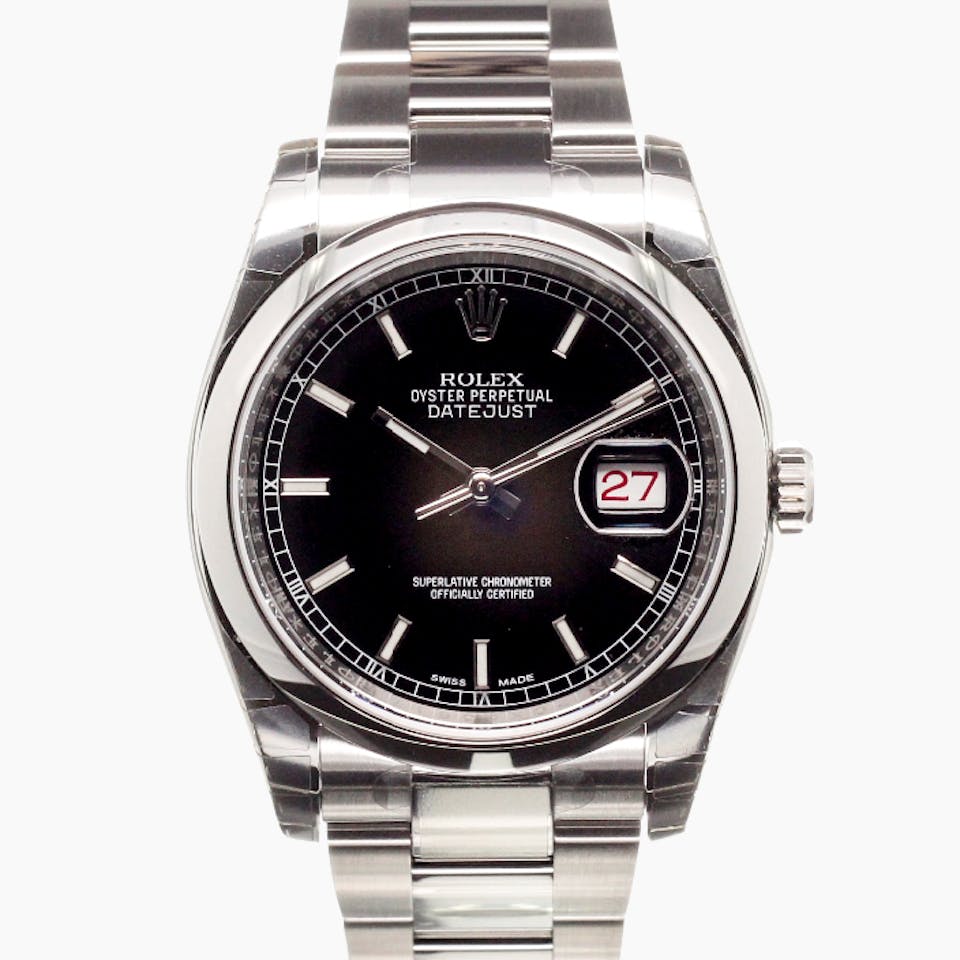
As one of the most iconic watch brands of all time, Rolex released the Datejust in 1945 and it was distinguished by its date indicator. This designs trademark was the Cyclops lense, and its original design has been nearly unchanged. A symbol of strength and intelligence, this timepiece has been worn by the likes of Winston Churchill and Dwight D. Eisenhower.
(all above photo credits to chronext.com)
If you're looking for a way to avoid being fashionably late while still being chic, check out our collection of timekeeping accessories!
-
Sustainable Jewelry: Wooden Accessories
Wooden Jewelry
By Paige McKirahan
As one of the most versatile materials in nature, wood can do everything from create beautiful jewelry to make paper. With the ability to be delicately carved and elegantly painted, it has been trending in the accessory industry for decades. Considering society’s movement towards a more sustainable future, this lightweight, natural material is highly sought after; its economical and eco-friendly designs have established itself as a frontrunner in sustainable product creation. Why, though, should we lean towards wooden creations rather than plastic and other synthetic products?
Of course, like many of wood’s natural counterparts, this material has been used for jewelry for centuries. In more modern times, the use of wood in fashion saw a burst in popularity in the 1930s and this went on until the 1950s. Mixed with plastic, glass and other materials, wood was used to create brooches, hat pins, and pendants. Some pieces were carved and painted and could be made by creatives at home or by jewelry companies. Many depression era manufacturers created wooden pieces that were comical and illustrated the artist’s great creativity. When plastics and other synthetics became popular in the late ‘50s and into the ‘60s, wooden pieces were forgotten as people were enthralled with the new, high tech products created by plastic molds. Despite this drop in circulation, wooden pieces are now attracting green fashion aficionados on account of their natural, sustainable style.
When creating wooden jewelry, the technique is based upon the grain of the wood; you work in the direction of the grain or across it, but never against it as it will crack the piece. To cut wood down to ones desired size, a gouge blade is uses to chip away the wood safely. Wood can enhance the beauty of a variety of other jewelry materials, included gemstones, bone, ivory, beads, and glass. Combining it with other organic materials can create unique designs that are typically carved by hand. Looking for a unique, environmentally conscious piece? Check out our selection of wooden accessories to get that natural feel without stepping a foot into the forest!
-
Pioneering the Scarf Industry
Pioneering the Scarf Industry
By Paige McKirahan
Seeing as how we have already learned the history behind the magnificent accessory, we begun to wonder about the designers who paved the way for scarves to become the classic piece that they are today. Hermes, of course, burst onto the scene with their wonderful silk designs that exuded luxury and wealth, capturing the attention of everyone from starlets to the everyday person. But what about the other popular designers that took the piece and molded it into something of their own? Read on to hear of our favorite scarf designers and brands throughout time (and to find some of their pieces in our shop!)
When the brand first stepped onto the scene in 1939, it emerged under the umbrella of the Glendser Textile Co. that received its first registered trademark for lady’s scarves and handkerchiefs. In the following decades up into the 1970s, Glentex became increasingly popular and was widely known for their beaded collars and vibrant patterns. Many pieces were made in Japan out of a wide variety of fabrics, including silk and rayon. At the height of their popularity, they even partnered with our beloved Schiaparelli and Gloria Vanderbilt to create high fashion pieces!
This brand, which was popularized by their easy-to-carry rainboots, hails from our home state of Ohio! Specializing in rainwear and waterproof accessories, Totes truly began in 1942 and shot to fame after they introduced the first collapsible umbrella in 1970. From there on out, they began creating other popular rainwear, including the coveted water resistant scarf. This supermarket and drugstore brand is still operating today and boasts a large collection of colorful, waterproof accessories that even high fashion lovers love to sport!
After its conception in the ‘20s, Echo began building an impressive arsenal of patterns that would build rapport until the late ‘70s when the scarf business began to see a decline. When the creators' daughter, Dorothy, took over the company after her husband’s death, she was determined to beat the dwindling sales and did just that in 1983 when the brand made its way into the European market. After a slew of licensing agreements with fashion and home goods giants like Ralph Lauren and Laura Ashley, the company began releasing more accessories and home furnishings that expanded their profits and popularity exponentially. Today, it is still privately owned by the family and this emerging lifestyle brand still celebrates their humble roots with their 95 anniversary just having passed in September. In their blog commemorating the event, they even go as far as saying that they feel responsible for bringing the scarf to the world of fashion (Bold statement! Do you agree?)

Though there seems to be many famous Vera’s in the fashion industry (think Bradley and Wang), Vera Neumann is one of the most iconic of them all; her namesake brand made beautiful art affordable and not just a thing to be admired on the wall. With all of her scarf designs being based upon original paintings, it is evident that Vera had creative roots in textiles and illustration. When she began a silkscreen printing company with her husband George and their friend Frederick, it saw almost immediate success. In the midst of World War II, the growing company was looking for ways to continue manufacturing product despite heavy rations; she stumbled upon some parachute silk at an army surplus store and voila! Her scarf business was born. She created the first signature scarf in history with her name transferred to every product, making her a household favorite with recognition all around the country. Marilyn Monroe, Grace Kelly, and even the First Lady Bess Truman loved her designs as she requested the "Vera" fabric be used in White House Decor. Her iconic presence in both the art and fashion worlds landed her work in the Metropolitan Museum of Art, The Museum of History and Technology, and the Museum of Modern Art. She was even commissioned to paint the Foucault Pendulum in the Smithsonian, which can still be seen hanging in their offices today.
As one of the industry’s most knowledgeable scarf entrepreneurs, Elaine Gold got her start as Vera’s assistant where she was the studio business manager tasked with helping develop and market the scarf business. 19 years later, she joined another budding scarf business, Robinsons & Colluber, where she was one of the first to make waves in brand marketing for the scarf industry. She then joined another one of our designer favorites, Totes, and ran their XIIX Karats brand that she eventually bought in 1983. Changing its name to Collection XIIX, she built it into a powerhouse with licenses from Anne Klein and Jones New York. When Drew Pizzo bought her company in the ‘90s, she went on to create Elaine Gold Enterprises, which found its first license with the US Postal Service! She worked with the Met, Vera Bradley, and essentially anyone in the industry looking to promote their scarves as she was the “go to” expert in the field.
Though there are a wide variety of other scarf designers that paved the way for today’s successors, these are some of our favorites. In addition, Avon, Paoli, and Burmel created high quality designs that were affordable and can be seen in vintage shops all over the world. On the higher end, Valentino, Missoni, and Givenchy all have been creating luxury scarves adored by the industry for decades. To purchase any of these brands, check out our links throughout this post or search our collection to find some hidden gems of your own!











